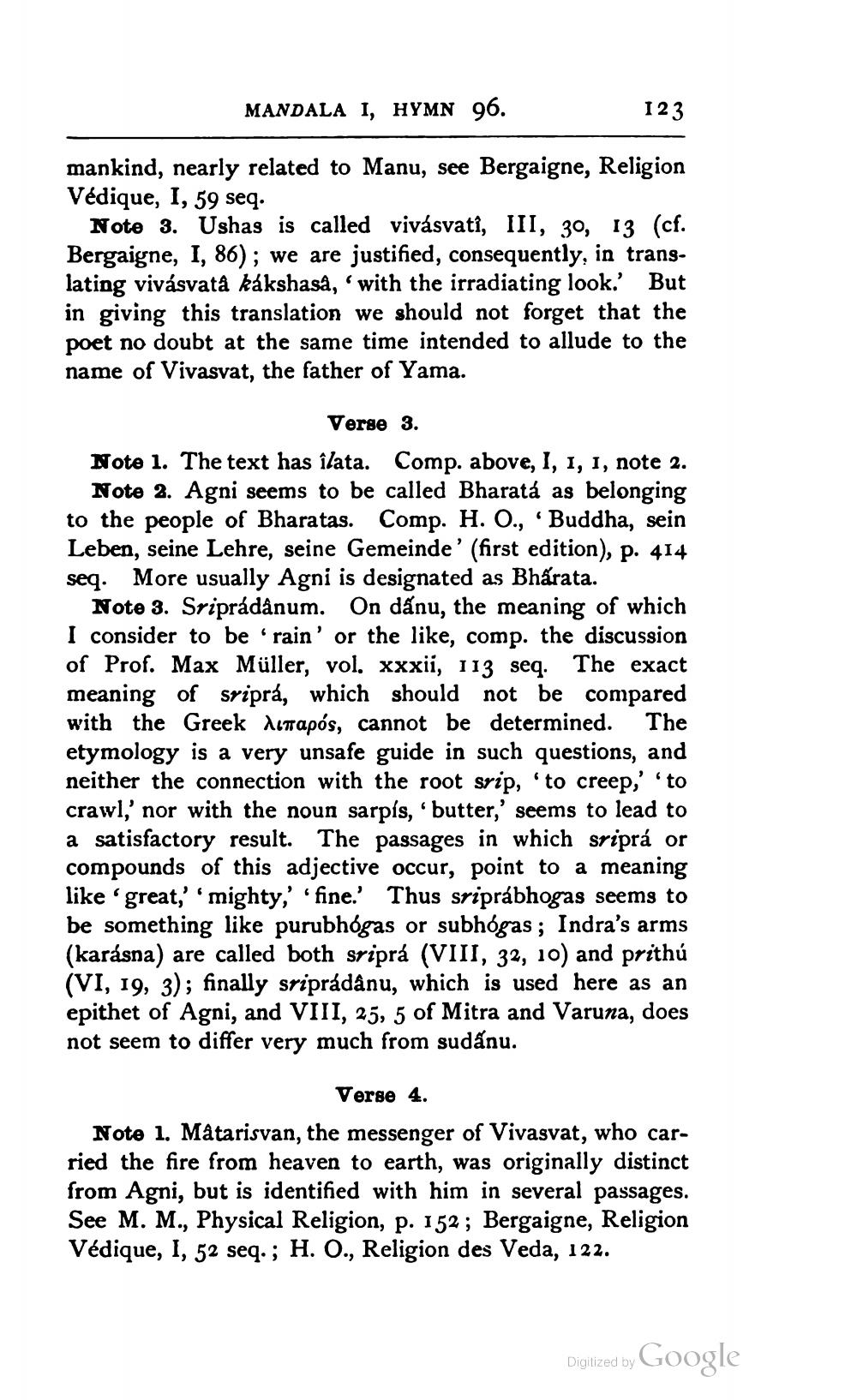________________
MANDALA I, HYMN 96.
123
mankind, nearly related to Manu, see Bergaigne, Religion Védique, I, 59 seq.
Note 3. Ushas is called vivásvati, III, 30, 13 (cf. Bergaigne, I, 86); we are justified, consequently, in translating vivásvatá kákshasa, with the irradiating look. But in giving this translation we should not forget that the poet no doubt at the same time intended to allude to the name of Vivasvat, the father of Yama.
Verse 3. Note 1. The text has îlata. Comp. above, I, 1, 1, note 2.
Note 2. Agni seems to be called Bharatá as belonging to the people of Bharatas. Comp. H. O., ‘Buddha, sein Leben, seine Lehre, seine Gemeinde' (first edition), p. 414 seq. More usually Agni is designated as Bharata.
Note 3. Sriprádânum. On dấnu, the meaning of which I consider to be 'rain' or the like, comp. the discussion of Prof. Max Müller, vol. xxxii, 113 seq. The exact meaning of sripra, which should not be compared with the Greek Aetapós, cannot be determined. The etymology is a very unsafe guide in such questions, and neither the connection with the root srip, 'to creep,' 'to crawl,' nor with the noun sarpis,' butter,' seems to lead to a satisfactory result. The passages in which sriprá or compounds of this adjective occur, point to a meaning like 'great,''mighty,' 'fine. Thus sriprabhogas seems to be something like purubhógas or subhógas; Indra's arms (karásna) are called both sripra (VIII, 32, 10) and prithú (VI, 19, 3); finally sriprádânu, which is used here as an epithet of Agni, and VIII, 25, 5 of Mitra and Varuna, does not seem to differ very much from sudánu.
Verse 4.
Note 1. Måtarisvan, the messenger of Vivasvat, who carried the fire from heaven to earth, was originally distinct from Agni, but is identified with him in several passages. See M. M., Physical Religion, p. 152; Bergaigne, Religion Védique, I, 52 seq.; H. O., Religion des Veda, 122.
Digitized by Google




